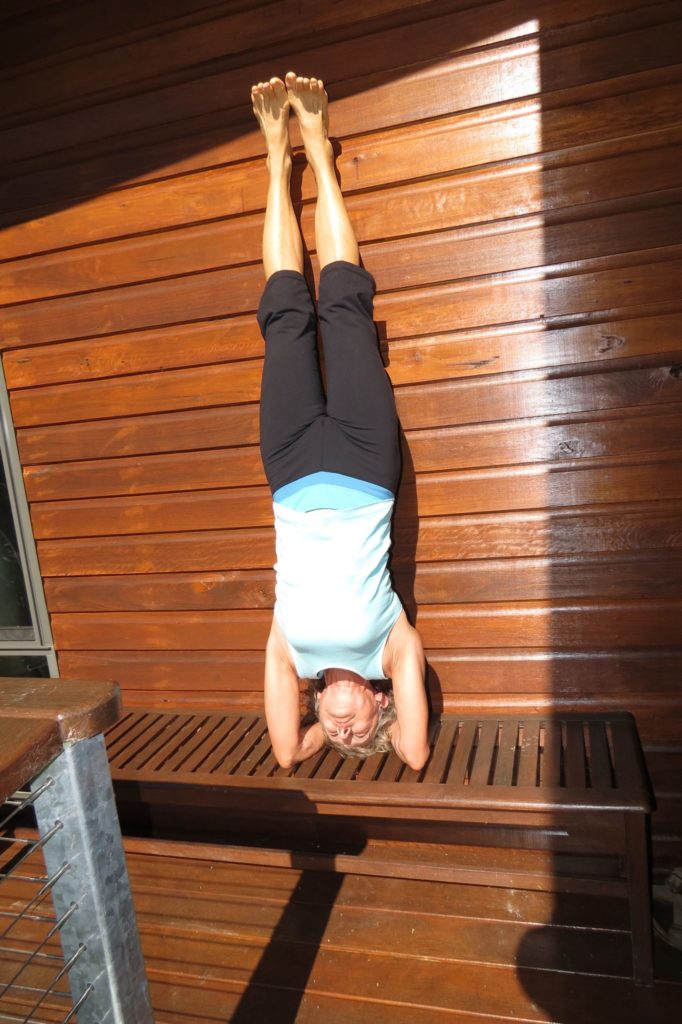
I’m an old yogi. It’s been forty-six years since I started down this path. The innovations in yoga practice and teaching over this span of time have been phenomenal. One of the biggest changes is the proliferation of YouTube yoga.
If anyone had told me that I would one day be doing yoga with an on-line yoga teacher, well, you can imagine my incredulity. Personal computers weren’t even invented!
Mandy, my friend and old yoga student, introduced me to Adriene on the weekend. Adriene Mishler is the doyenne of yoga videos with an audience of millions. Mandy and I had fun following a ‘deep stretch’ routine as it streamed onto her living room television screen.
Call me old-fashioned, but I like doing my home yoga practice. I started when I was 27 and haven’t ever really stopped. I feel that there’s so much to learn in solo practice.
One of the boosts I received for my practice was when I attended six weeks of classes at the Yoga Institute in Poona, India.
It was in a general class that I did with Mr. Iyengar’s son, Prashant. We warmed up for about an hour with standing poses, with special attention paid to tadasana (mountain pose). Later when we’d moved on to inverted poses, he reminded us that sirsasana (headstand) was the practice of tadasana turned upside-down.
Prashant displayed a good sense of humour when he pointed out to us something important about sirsasana. In the same way that in tadasana our faces should be beautifully serene, in sirsasana our feet should show the same quality. This was because he had to look at them. Who wants to look at unhappy feet?
Most importantly, Prashant was describing a correspondence between two poses. For mature yoga practitioners, the correspondences among poses is more obvious. Donna Farhi in her book Yoga Mind, Body & Spirit, calls these ‘motif movements’. By understanding the simple poses thoroughly, we move on step-by-step to more complex poses.
This is how it works.
- Tadasana is the basis of the poses that help anchor the mind and ground the body, for instance, in all standing poses and most inversions.
- Dandasana (staff pose) reveals the way you need to work in seated poses, forward bends and twists.
- Salabhasana (locust pose) teaches us about prone movements – the ones where you are face down – and all the backbends.
- Savasana (corpse pose) relates to the supine poses – lying face up – and all the restorative poses.
- Then there are miscellaneous poses, i.e., lateral or side stretch movements, arm balances and abdominals.
What Prashant wanted us to understand, and what Donna Farhi underscored, is that if you want to learn a new posture, you need to address the structural components that make up the ‘motif pose’.
I’m not sure YouTube videos can relay this sort of information. It would be good if they do. But I do know that personal yoga practice teaches us these correspondences if we dedicate ourselves to practice overtime. To my way of thinking, this gives personal practice its richness and satisfaction.

Beautifully put Eve. Some students (and sometimes myself) are so keen on “experiencing” the end product pose that we loose it from the get-go. An excellent reminder from our modern sage!
Something to live up to, Sue, a ‘modern sage’. Blessings on your practice!
I love your take on YouTube yoga Eve, and where you took it! And I’ve not heard of the motif poses before but this makes total sense and I’m keen to play with these in my practice. Thanks for your ongoing inspiration and guidance (and it was so wonderful to practice with you) (and Adriene!)
Hi Mandy,
YouTube and YouYoga are not mutually exclusive, are they?
Hope we can practice one or the other together soon!
xx
Yes Friend Eve,
have done many a class with Adriene and also Tim Senesi and they’re pretty good you know. As long its not possible for them to see in real time across the planet, a synchronous visual on all of us following their instruction; I think its pretty safe to say a fair few misinterpretations of the asana’s ARE being invisibly committed and not in a good way.
NOTHING can replace or remove the 15 continuous years of treasured ‘on the mat’ personal instruction I received from you dear Friend. Those neurological pathways still serve, not as ‘set in stone’ intransigence but as a flexible framework to hang my home practice and an other I find myself doing.
Long live personal instruction as the gold standard in yoga practice and the many exceptional teachers who are the cultivators of this life connecting living process.
Thanks for your comments, Peter. Of course I agree! I hope I wasn’t coming across as being critical of t.v. yoga. It’s always been available, back to Swami Saraswati and Lilas Folan. The way yoga morphs over time will continue and it’s what I like about it. Nothing makes me happier than knowing that those who started yoga with me ‘back in the day’ are still loving their yoga practice.
I just attended a class yesterday with an experienced teacher here in Bellingen. She spoke about how when we first start practicing we notice a big transformation then as we progress we forget where we started. That’s why its so important to keep coming back to the foundation. I was so moved by the class that I went straight to Instagram to talk about how experience counts. ( not sure how many people actually watched it though) I’d much rather be on my mat exploring the basics any day than follow along on YouTube…But sometimes its kinda fun too..
Maybe we can do an ‘Adriene’ together, Rachel, when you come to visit next week 🙂